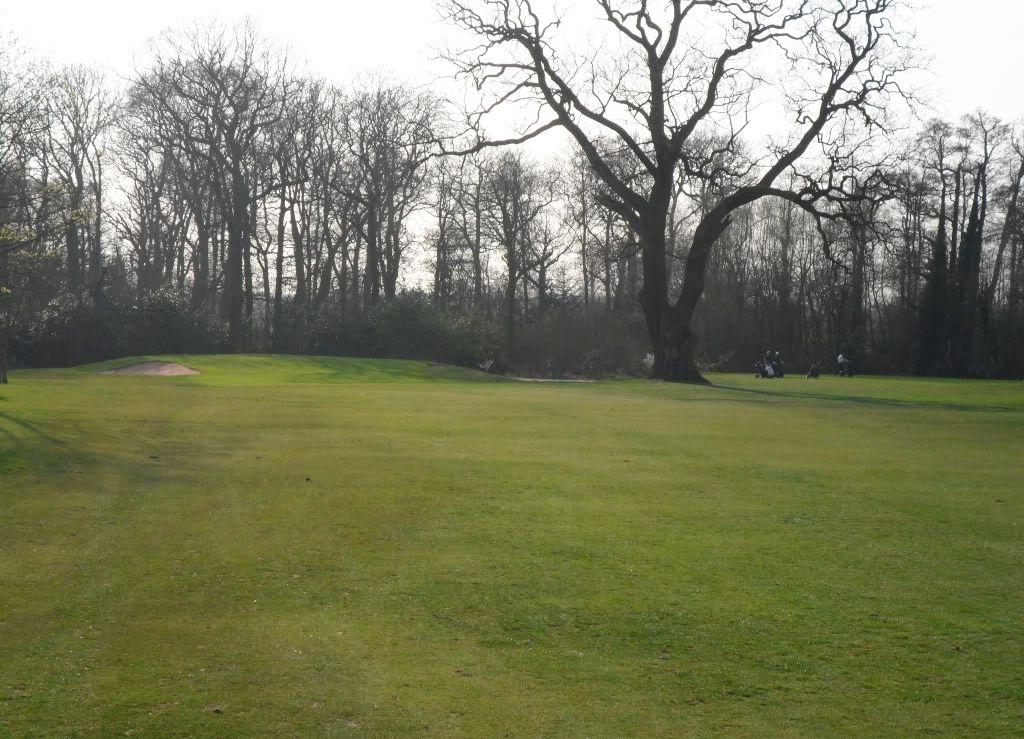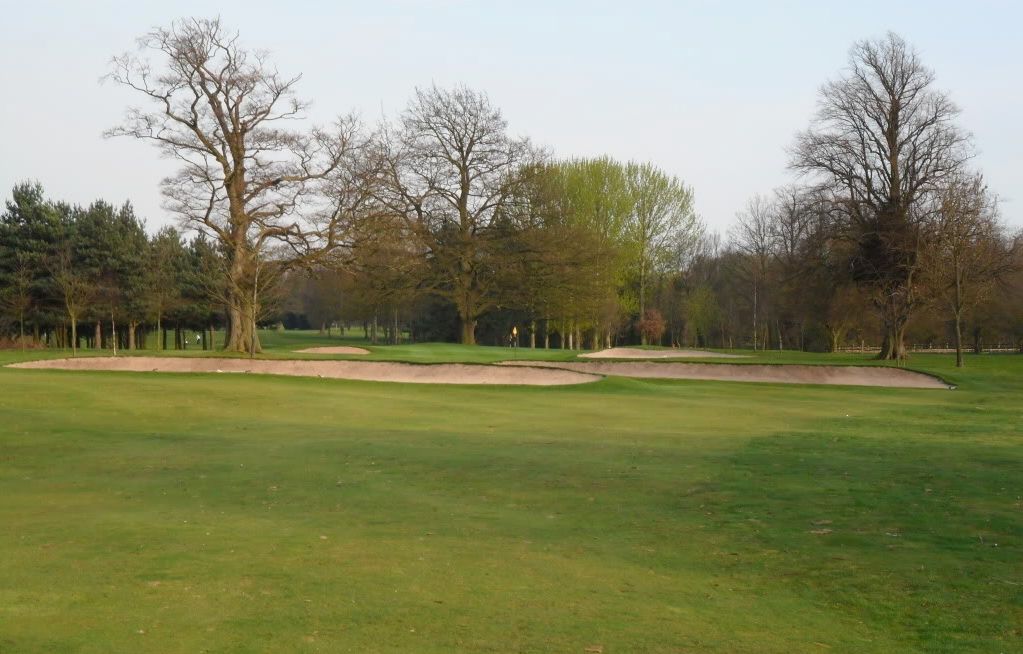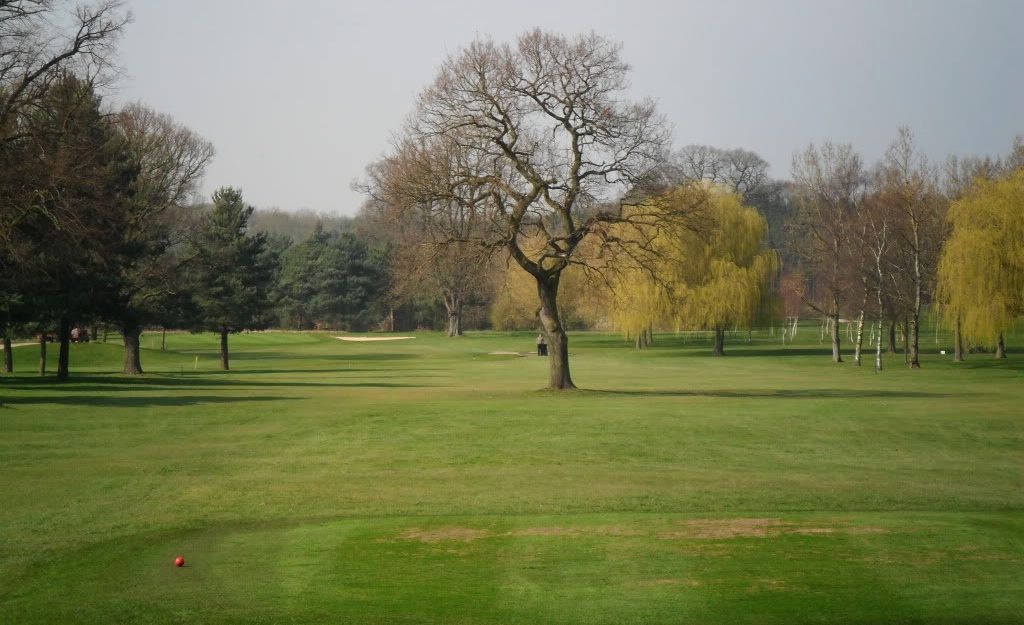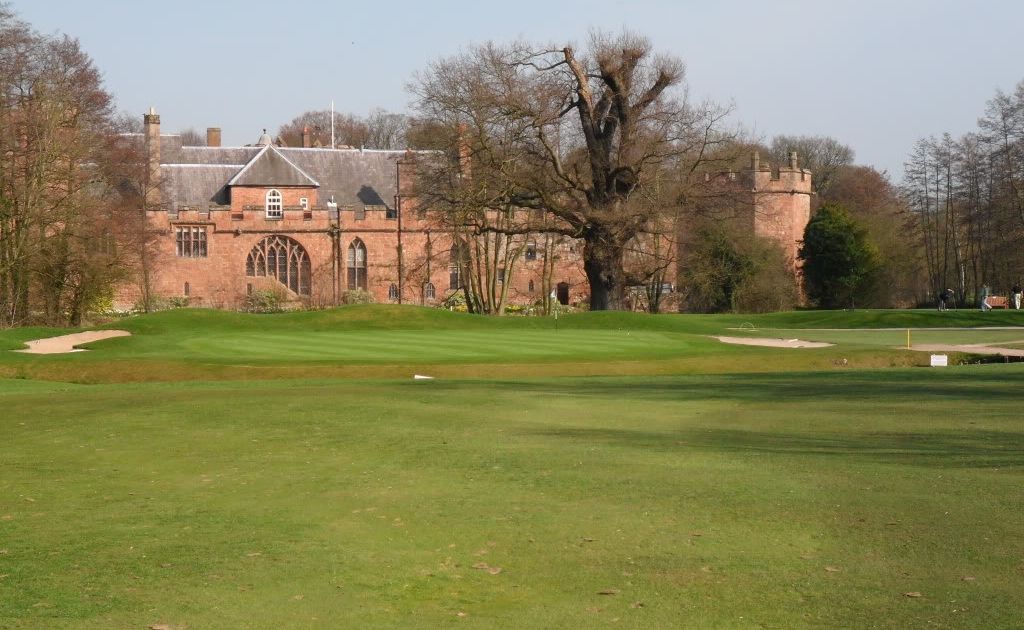Built on the estate of Maxstoke Park not far from Coleshill and the dead centre of England (Meriden), the course opened not long after WWII. The estate included a deer park, housed a prisoner-of-war camp and the castle was used to store airplane engines. Maxstoke Castle is a moated and fortified manor home dating from 1345. The impressive building was never attacked or besieged and remains largely intact as originally designed. Upon retiring as Captain in the Royal Navy in the late 60s, Charles Fetherstone-Dilke set about restoring the castle which has remained in the family for over 400 years. The family graciously rents the land to the golf club for a nominal fee.
The Hawtree designed course features flat fairways, several areas of water and pinched driving zones. There are a handful of good holes with typically subtle greens. Some of the parkland characteristics have been eliminated by a lack of tree management. In particular, some fantastic specimen trees are buried among less attractive quick growing trees.
The first is a straight away moderate length par 4 through an alley of trees. The green is clever in that it slopes deceptively to the left.

#2 is a fine par 3 with a steep step creating two tiers in the green. The following hole features a tough drive with OOB down the left and a copse right. The green seems to hide amongst the fairway creating an awkward approach. The 4th is a good hole buried in trees. Turning right around a huge oak with a hazard on the left suggests either a layup or sling fade. For some reason the club has placed trees down the right all the way up to another graceful oak protecting the right side of the green. There are steep falloffs to the rear and sides, but one can kick an approach up the gut if he earns good position off the tee.

Like the previous hole, the next is interesting, but ruined somewhat by trees. This short two-shotter has a moated green which makes for a dicey approach after laying up off the tee. Water requires another lay-up for the 6th as well. Although, I really like expanse of short grass between the green and water. Somehow it acts as dead ground and deceives players into not taking enough club.
#7 is the first of only two par 5s which happen to come back to back. This hole is reachable in two but the driving zone is well protected with bunkers right and left. Water threatens the second if one has not hit is best off the tee. The second of the par 5s is of far more interest. The hole turns right around a gnarly old tree and can be reached in two. A sea of seemingly criss crossing bunkers must be traversed as well a sentinel tree on the left.

The ninth is a long par 3 playing over the same pond we crossed on the 6th. #10 turns back on the previous hole and requires the golfer to hit over or around a large tree. Into a winter wind this can be daunting challenge, but in warmer temps it should be doable for most. The approach has water lurking to the left and a bunker right.

Another of Maxstoke's stout par 4s, the 11th is a drive similar to #3 in that a slight draw is called for, but the approach on this hole is likely a wood even after a good drive. 12 turns about face and once again features fantastic old trees which are unfortunately stranded in a forest of not so noble specimens. Below is the approach after a very good drive playing between bunkers and trees.

The castle with #17 green and #13 tee shy of the moat.

#13 turns right around a challenging carry bunker with ungodly trees eliminating the purpose of the sand. The next was a clever little par 4 until recently. Bending left around (you guessed it, ugly trees burying a few lovelies) with sand down the left, this was a great risk reward hole. The powers that be decided flat bellies could reach the green so a pond was built to cut aff that avenue; truly one of the most idiotic things done to a course which is chocker block full of bone head changes.
The fifteenth is a clever short par 4. Bunkers are lined down the right and OOB down the left. One wants to get left for a good angle at the flag for what is often a short pitch. The green runs away from the fairway to the back left corner making an approach from the right unattractive.
The last of three short holes and part of a fine finishing stretch, #16 requires a very accurate tee shot.
The final two holes are exacting par 4s, one swinging left (this really is a hooker's paradise) and the other swinging right. Below is the approach to 17
green protected by a moat.

The 18th may be the toughest driving hole among several candidates. There is a hazard down the left which looks out of play, but is easily reachable. The target area for a driver is brutally narrow, but one doesn't want to leave too long a club in for the tough approach. The green sets at an angle not unlike a Redan.
I fear this was not a great way to end the Winter Tour, but one takes what he can. Its fairly obvious that I wouldn't suggest anybody take even a minor detour to see Maxstoke Park. Even so, there is some interesting golf to be had. I can't help but think the course may have been more interesting fifty years ago as Maxstoke serves as a reminder of what successive committees can do to a course if members allow it.
Ciao
Other stops on the 2010/11 Winter Tour.
http://golfclubatlas.com/forum/index.php/topic,46177.0/ Reddish Vale
http://golfclubatlas.com/forum/index.php/topic,30965.0/ Beau Desert
http://golfclubatlas.com/forum/index.php/topic,46538.0/ Coxmoor
http://golfclubatlas.com/forum/index.php/topic,43021.0/ Southfield
http://www.golfclubatlas.com/forum/index.php/topic,32228.0.html Huntercombe
http://golfclubatlas.com/forum/index.php/topic,47211.0.html Worplesdon
http://www.golfclubatlas.com/forum/index.php?PHPSESSID=45ccba76deaf4915ac239ce86846a314&topic=30926.0 Kington
http://www.golfclubatlas.com/forum/index.php/topic,38973.0.html Little Aston